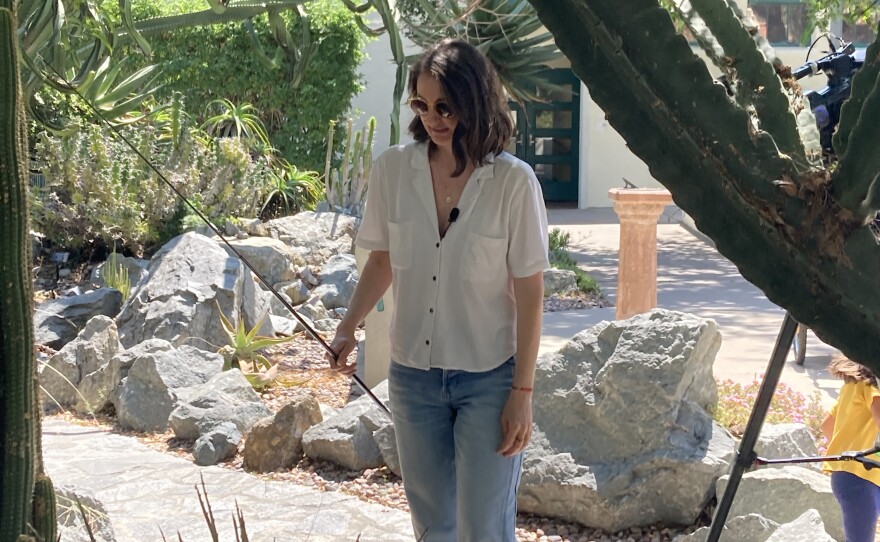Kinsey Brock is hunting lizards. In a desert garden at San Diego State University (SDSU), she carries a long stick with a string lasso at one end to try to snare one. Finally, she does. It’s a male.
“Interesting fact: Lizards and snakes have two penises and they use them both. Not at the same time!” said Brock, an evolutionary biology professor at SDSU.
Having a spare penis is not the product of an urban environment. But there may be some traits and physiology that are. Lizards are wild animals that live all around us. Brock is trying to determine if life in an urban environment has made them evolve into different creatures.
The lizard she caught in her lasso is a common San Diego lizard, usually called a blue belly or a fence lizard. If you live in San Diego, you’ve almost certainly seen one zip across a sidewalk ahead of you.
“I think a lot of peoples’ perception is that cities are places that are devoid of nature. And that couldn’t be more untrue,” Brock said. “Humans and our cities are a part of nature. We are one of the world’s most influential ecosystem engineers.”
She adds those ecosystems are only going to expand.
Brock’s research has taken her to the Mediterranean region, where cities and towns have been home to lizards for thousands of years. One very common type is wall lizards. International travel has caused that species to be introduced in Southern California.

“So these wall lizards have been brought from two different places in Italy to two different places in California," Brock said. "So they’re in San Pedro, in Los Angeles, but they’re also in San Diego County, up near San Marcos.”
She said in L.A. they are doing very well. Maybe too well if you’re into California species conservation.
Brock said she has yet to fully investigate the genetic differences between urban and country lizards. She said she has seen differences in color and body temperature.
Urban lizards are more accustomed to humans, therefore tend to be less wary of us. And species selection may be related to differences in heat, moisture — due to irrigation — and the presence of animals that prey on them.
“Bird diversity is greater outside urban habitats than it is inside urban habitats. Birds like to prey on lizards. So do other small mammals. Snakes especially. We have fewer snakes in urban habitats,” Brock said.
Brock, by the way, is also an artist. New to SDSU, she is decorating her office, and painting a snake on the wall.
While traveling in Greece she saw ancient marble carvings, called cycladic figures. In an ink painting she created some herself, and gave them the heads of lizards.





